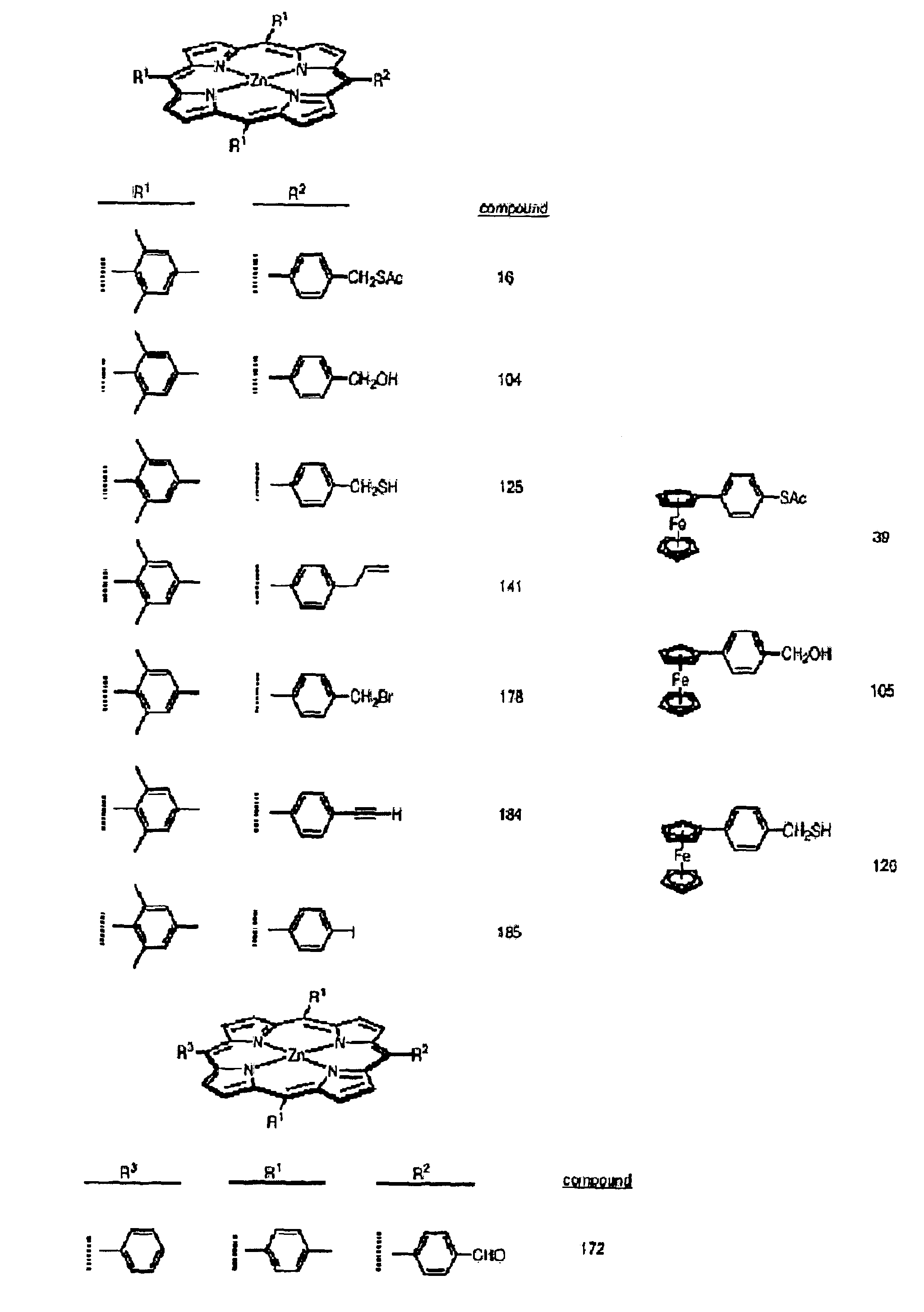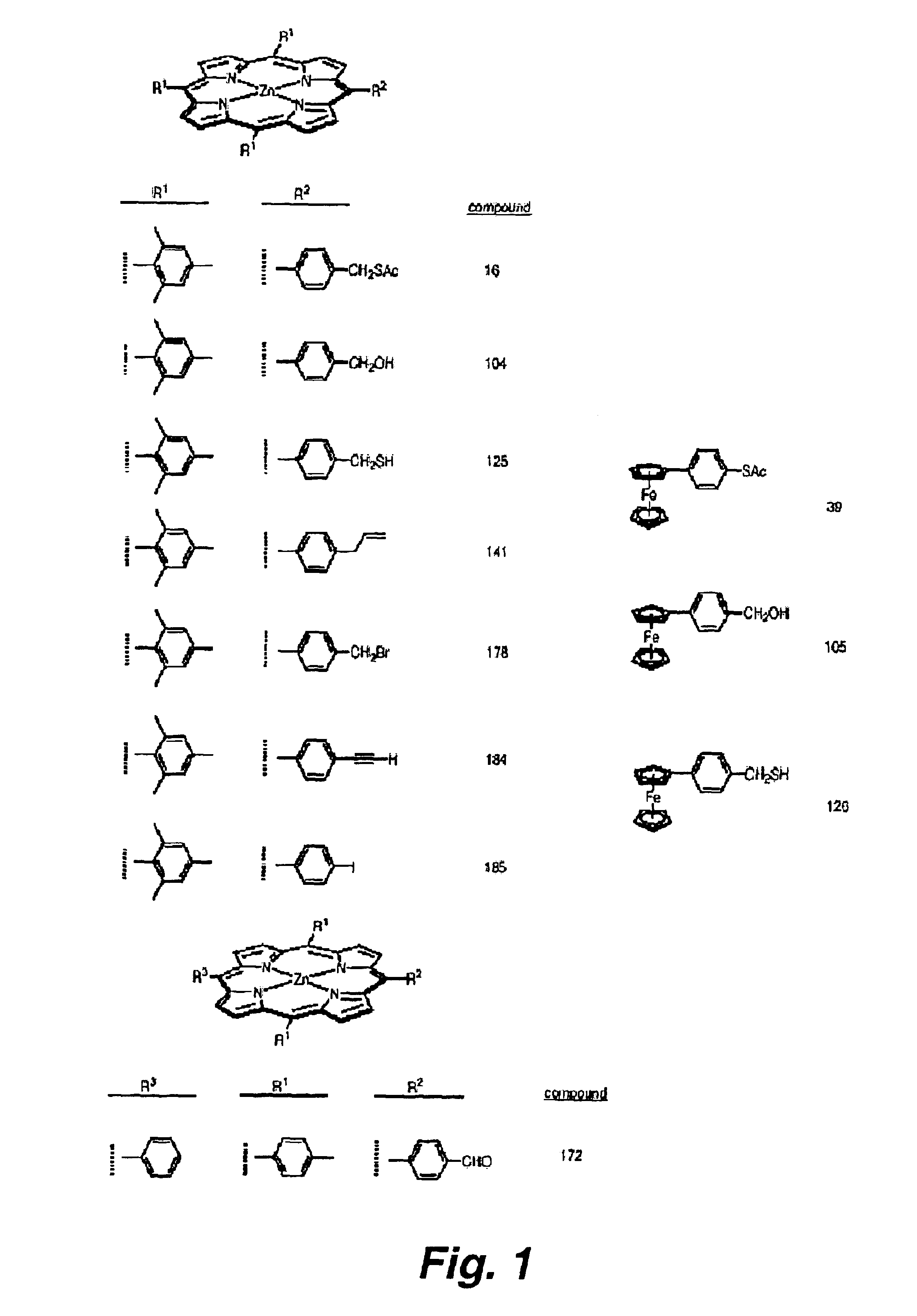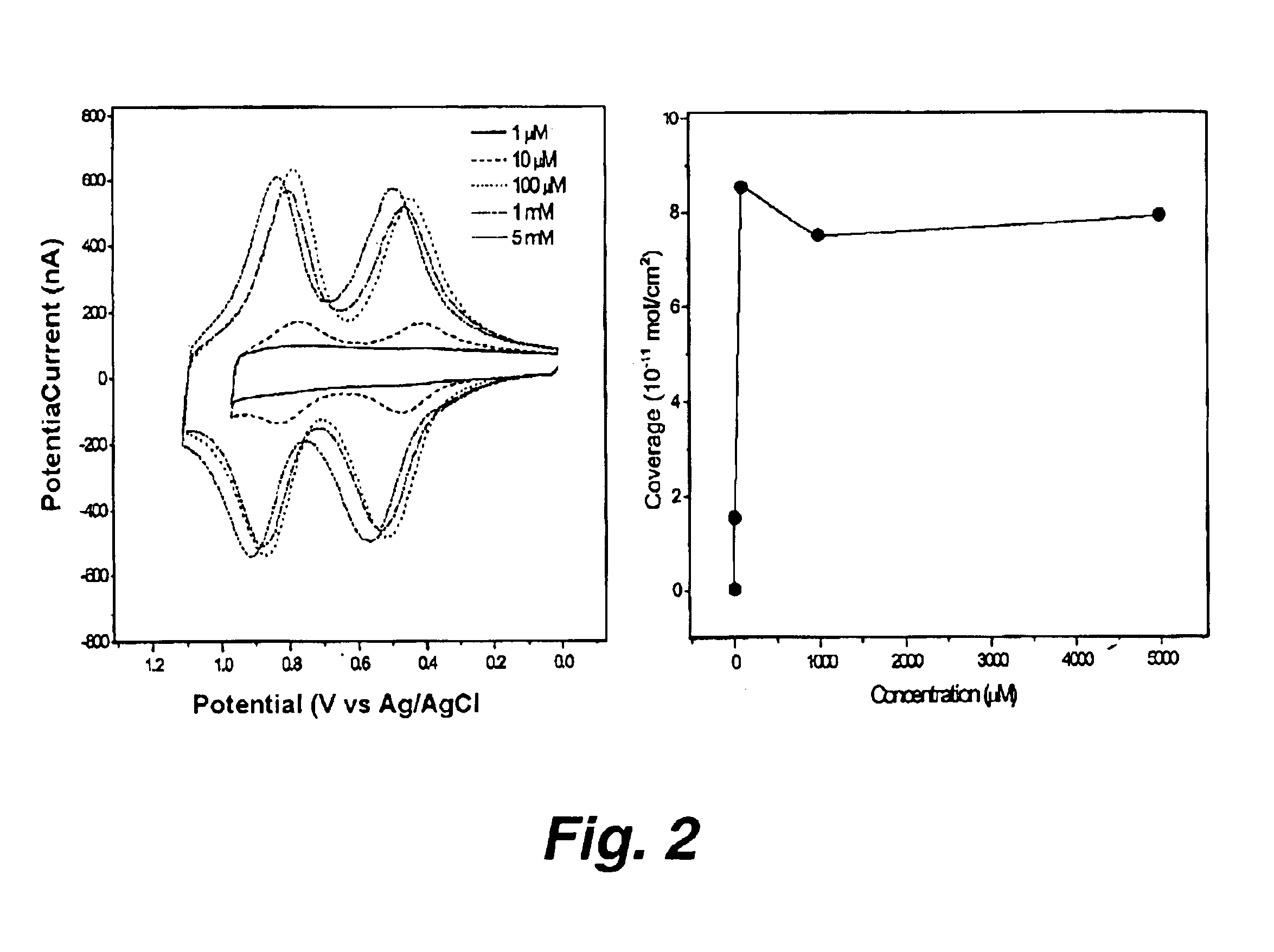Attachment of organic molecules to group III, IV or V substrates
a technology of organic molecules and substrates, applied in cell components, instruments, electrochemical generators, etc., can solve the problems of degrading organic molecules and fairly toxic materials, and achieve the effect of enhancing the integration of molecular materials and completing in short tim
- Summary
- Abstract
- Description
- Claims
- Application Information
AI Technical Summary
Benefits of technology
Problems solved by technology
Method used
Image
Examples
example 1
Molecules Can Perform in Electronic Devices Under Real-World Processing and Operating Conditions
[0111]The central tenet of the field of molecular electronics is that molecular components can be used as functional elements in place of the semiconductor-based devices present in conventional microcircuitry (Kwok and Ellenbogen (2002) Materials Today, 28-37; Carroll and Gorman (2002) Angew. Chem. Int. Ed. 41: 4378-4400). To serve in this role, the molecular components should remain robust under daunting conditions including high-temperature (e.g., 400° C.) processing steps during manufacture and very large numbers (109-1012) of operational cycles over a lifetime (International Technology Roadmap for Semiconductors (ITRS), Semiconductor Industry Association, San Jose, Calif. (2000)). There has been considerable skepticism whether molecular materials possess adequate stability to meet such requirements. Herein, we demonstrate that porphyrin-based information storage media meet the process...
PUM
| Property | Measurement | Unit |
|---|---|---|
| temperature | aaaaa | aaaaa |
| temperature | aaaaa | aaaaa |
| temperature | aaaaa | aaaaa |
Abstract
Description
Claims
Application Information
 Login to View More
Login to View More - R&D
- Intellectual Property
- Life Sciences
- Materials
- Tech Scout
- Unparalleled Data Quality
- Higher Quality Content
- 60% Fewer Hallucinations
Browse by: Latest US Patents, China's latest patents, Technical Efficacy Thesaurus, Application Domain, Technology Topic, Popular Technical Reports.
© 2025 PatSnap. All rights reserved.Legal|Privacy policy|Modern Slavery Act Transparency Statement|Sitemap|About US| Contact US: help@patsnap.com



